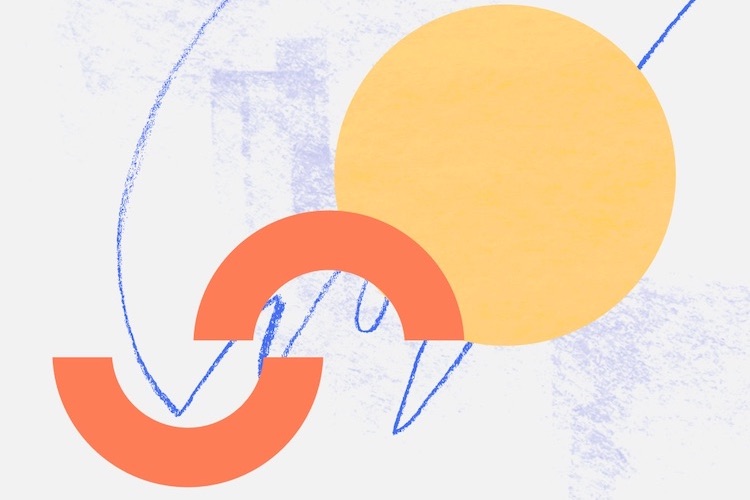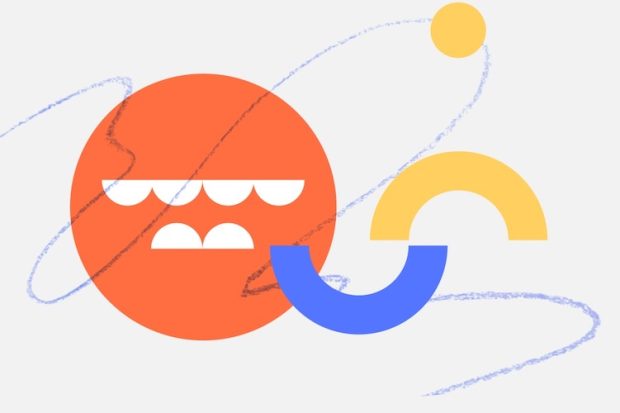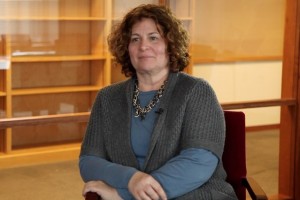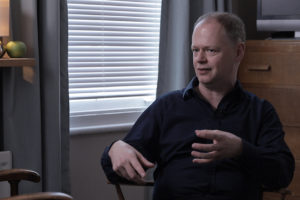Linguistic Theory of Question
Linguist Maria Polinsky on polar questions, strategy of asking in different languages, and cross-linguistic un...

Language is fascinating. It has a particular distinction among scientific topics; like other aspects of being human, it seems so available to us. We all know what language is, at least unconsciously, and we all use it. What we need to figure out in detail is this unconscious system that we are actually using to produce and understand our sentences and meanings. And for language acquisition, how does it develop? If the central property of biology is development, as is often stated, than at least one central property of language is its development. Language acquisition lies at the heart of the study of the human mind and the study of what we are as humans.
Simply put, language acquisition studies how new-born babies, who do not talk and do not understand, develop to the stage where they can understand and speak in extremely complicated ways. In order to explain this fact, we really have to understand that language acquisition is very much a biological process. So what language acquisition really means is, given that you have certain kind of biological capacity to learn language, how that capacity develops and how the properties of particular languages are learned. We think that all human beings have brains that are tuned to the content of language, and no other species has anything like human language.
There are two parts to language acquisition. First is the expression of the biological capacity of human language, which all human beings have, in the same way that we have a biologically given capacity to see. Vision does not just involve the eyes; it involves much deeper apparatus. In order to see, to have object recognition, to understand scenes, all sorts of computations have to occur in the brain. That capacity to see is shared with a lot of other animals, almost all mammals, for example. We also have a capacity to pump blood (by our heart). The modern study of language acquisition regards the capacity for language in a similar sense. All sorts of computations have to occur in the brain in order to use language. Unlike vision, though, other species do not share language. Such species-specific capacities are also well-known in biology. Bats, unlike us, have sonar for navigation. Very few animals have sonar. It is a biologically given capacity. Baby bats do not have to discover sonar, it is a part of their brain. That is how we have language. We express our human potential in language.
The other part of the problem is that, for reasons that we do not understand (a mystery, really, subject to a large amount of speculation), there is more than one language. There are Russian, English, Swahili, and so on. There are thousands of possible human languages. These human languages all meet the biological concept of human language. So given that human beings really have this capacity, at the same time there are some differences between languages. These differences have to be learned. There is an environmental learning process which involves learning the particular customs of your own language. This learning process is strongly guided by the universal properties of the biological capacity of language.
How do we go from the newborn, who does not seem to have any of this, to a child 7 years later, who has most of it? One way to think about the problem is to consider sentences – what their structure is, what their meaning is, and how these properties get expressed over time. We know that very young children have quite a few capacities for language. But children do not begin producing sentences instantly. Normally when we think about what kids do when they first start talking, they say one word at a time. A newborn usually does not say anything; children do not begin actually speaking until they are about one year old – in some range between about 9 and 15 months old. They might say ‘mama’ or ‘juice’, for example.
They do not begin putting words together in their speech until about 18 months old, sometimes younger. Then they begin to have sentence-like patterns. The words have structure that seems to convey meaning in the way that sentences do. A child might say something like ‘want juice’, or ‘want milk’, or ‘daddy home’. Children can usually understand a little bit more than they can produce – comprehension precedes speech a little bit. But we have good evidence that children at 18 months old and even younger know all sorts of things about syntax, about the form of sentences.
Methodology is a big part of the field. How do you get evidence from quite young children who would have difficulty following instructions, for example children younger than 2 years of age?
We study many different languages – e.g. English, German, Russian, French. What the field of language acquisition mostly wants to do is to study those properties of acquisition that seem to relate to important questions and we get the data from wherever we can get it. We can ask a specific question in some language, but that question might not be so easy to study in another language. For practical reasons, in some languages it is much easier to get data. If no scientists (linguists, psycholinguists) speak a language, it is often much harder to get data, so they are much less studied. You pick a language just like linguists do when they study adult language – you pick it on the basis of interesting questions.
Here is an example about how we study children who are around 1.5-2 years old. These are children who are often in the ‘two-word stage’ (the one when they put two words together). It used to be thought that at this age kids did not know anything about tense, about how to put endings on verbs, etc. But they actually do.
Tense is the property of language (of its syntax) that is interpreted as the time of the reported action. ‘Past’ tense refers to actions that happened before ‘now’ [the time of speaking] and ‘present’ tense refers to actions that are happening now (or, in some languages, the future). Let us say the children are learning French. In French (see Fig. 1) if you want to have a sentence in the present, ‘John is speaking’, you say, ‘Jean parle’. To make the sentence negative we say, ‘Jean ne parle pas’, ‘John is not speaking’’. We put a ‘ne’ in front of the verb and a ‘pas’ after. (Often the ‘ne’ is omitted, and almost always by very young children, so we’ll only mention ‘pas’ from now on). If you use a verb with an infinitive (without any tense), it is ‘parler’ – ‘parler français’ – ‘to speak French’. If you want to make the sentence negative – ‘to not speak French’ – you say ‘pas parler français’. ‘Pas’ comes in front of the untensed verb. This is just a very small piece of French syntax, but it is going to play a role in what we learn about children. If the verb is tensed – it precedes ‘pas’, if the verb is untensed – it follows ‘pas’. This fact is explained by linguists by thinking that when the verb is tensed, it must move from a position after ‘pas’ to a position before ‘pas’. This movement is called ‘raising.’ Can a child of 18-24 months of age actually know about raising?

Fig. 1
We use a classic method when one studies very young children. We take a child talking to his mother or father and record her speech with a tape-recorder (or a video-recorder, though before the1970s people just wrote things down). You record the natural speech of the child perhaps once a week for an hour for a period of time (a few months or a few years). What you wind up with is lots of data made up of the utterances of a child and a parent talking. In this case, we are interested in what the child says whenever she produces both a verb and ‘pas’. You now construct a two by two table – whether the verb is tensed/untensed and whether it precedes/follows ‘pas’. What these studies find is that whenever the verb is tensed, it always precedes ‘pas’ with a handful of exceptions in several hundred utterances. Furthermore, whenever the verb is untensed (is an infinitive, like ‘parler’), the verb almost always follows ‘pas’ (again, only a few exceptions). The child’s productions are almost one hundred percent perfect; the exceptions look like some kind of measurement error. The tense of the verb always tells you whether or not ‘pas’ will precede or follow it. As young as we can measure (that is, from the beginning of the two word stage), children have almost perfect placement of ‘pas’ with respect to the tense of the verb. Furthermore, this small example has been replicated many times for different pieces of the syntax of simple sentences.
Scientists were quite surprised by this – how early the child masters a language particular process. This is one of many fundamental results of the modern study of language acquisition. Children’s biological capacity allows for not only the expression of meaning in many different ways based on this capacity, but also of the learning of these quite subtle language-particular properties (such as whether the tensed verb raises or not). Previously scientists had thought that, this type of learning was error-ridden and prolonged, based on the struggles of an uninformed child.
Another question is based on the fact that the biological framework for language comes from genetics. Genetics establishes in human beings the kind of brain that allows us to have what we call ‘human language’, what linguists call Universal Grammar. This is the brain’s internal computational system of language, just as we have a visual system or some other kind of system. Is this all there when the child is born?
There are probably a few people, mostly psychologists, who do not study the details of language. They have a kind of traditional view – traditional for American psychology – which is that children do not have anything special in them with regard to language or even cognition. There is no particular biological aspect of the brain that helps them to learn language. There are still some people who believe this, what is called an empiricist view. The view of these psychologists is that the kids can learn language simply by using their general learning abilities. Such a view is not very naturalistic. It does not ally itself with biology and genetics. It is also a very old view. It was popular in the heyday of American empiricism of the 1950s, and some scholars still adhere to it, although there are large numbers of empirical arguments against it.
The expression of the biolinguistic theory goes back hundreds of years in Europe to some extent to the rationalist philosophers, like Leibniz and Kant, quite a few French philosophers, and in particular to what was called ‘Port Royal Grammarians’, who expressed this view several hundred years ago. That is where the term ‘Universal Grammar’ comes from: they thought that there is a particular universal design to natural language. And Chomsky brought his view back into the field, but he also moved it into the biological framework.
The other view, the one I called ‘empiricist’, also has a historical precedent – in empiricist philosophers. If we pick the most famous, they came from England and Scotland: David Hume, John Locke, George Berkeley – the empiricist philosophers who talked about learning from experience. They talked about how you learn particular things, for example, by the ‘law of contiguity’. If two ideas were next to each other (like when you saw two things together), then you associated them, for example ‘the sun rising’ and ‘morning’. So they had a kind of learning theory. Current psychologists are mostly (if not nearly always) empiricists, and they have this philosophical precedent.
There are very particular questions that people work on at any particular time. There are models and some theories. Even among the people who share the same general view, there are different properties worked on. I have only given the tiniest example of the kinds of questions that developmental psycholinguists and linguists work on. There is a rich world of phenomena and models, and exploration of the field would require a much longer article.

One puzzling question is, with all this language variation, what is the actual computational mechanism that allows the child to learn the parameters that distinguish languages, for example whether the verb raises or not? It is a computational, a mathematical, a theoretical question, and we do not really have a good answer to it. It turns out that the ‘learning’ aspect of language is one of the most challenging, though not the most fundamental, question. What actually allows for the learning of the language particular aspects of grammar? We know that using the linguistic system, the universal genetically guided system is part of the answer. What is the more detailed mechanism – that is one open question.
Another big question is at what stage and age various aspects of grammar and semantics develop. How does the genetic system work? Why are some properties delayed and others aren’t? And here we begin to do work that interacts with genetics.
We also want to know how a system breaks down. There is productive and insightful work on language impairments, such as Specific Language Impairment (SLI, where a child has a problem with language but no other cognitive impairment), language in autism, language in Williams syndrome, language in Down syndrome. These are all different patterns, and we want to know how linguistic development breaks down in each of these impairments, how that is related to different aspects of grammar, semantics and pragmatics. Think of it as a problem of development biology. Why do some things come late and what makes them come late? Why is the breakdown different in particular impairments?
Edited by Polina Sandler

Linguist Maria Polinsky on polar questions, strategy of asking in different languages, and cross-linguistic un...

Linguist David Adger on the Facebook chatbots experiment, the history of getting the AI to understand and spea...

Psychologist Helen Tager-Flusberg on theory of mind, comorbidity, and symptoms of autism